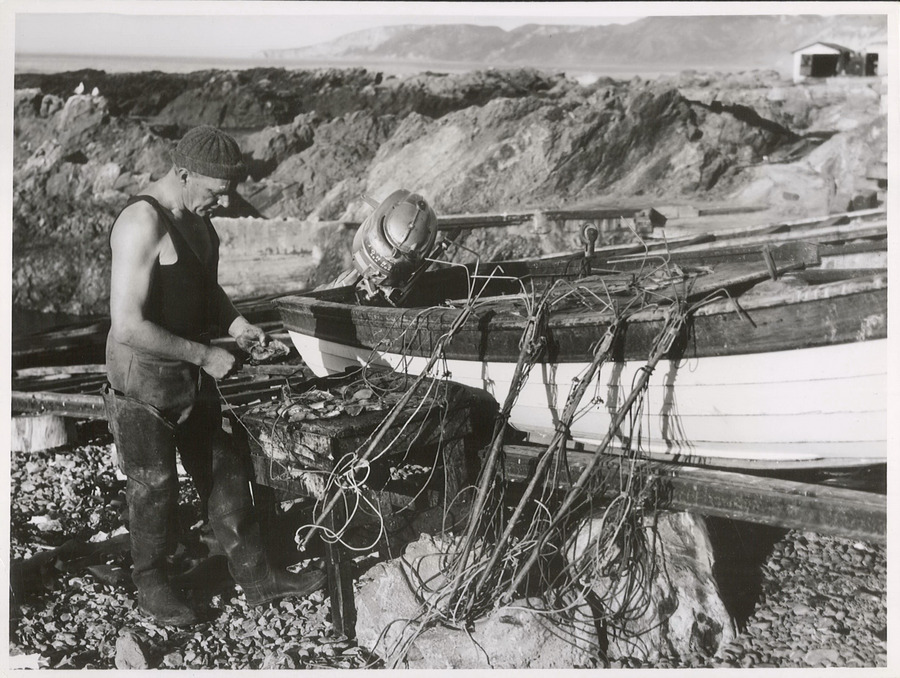An introduction to Fyffe House
Fyffe House was literally built on the back of whaling – the initial single-storey cottage, which became the wing of a larger home, rests on piles made from the vertebrae of a mighty Tohorā (Southern right whale). But Kaikōura’s famously pink heritage building, and the land it occupies, has a history that is centuries deep, dating from the arrival of tangata whenua. By the end of your visit, you’ll have gained valuable insights into the full history of the place, including the whaling industry, and a vivid sense of the lives of three families who inhabited the house between 1844 and 1980.
The theme linking the early whalers with the families that followed is one of struggle and resilience. Today, Fyffe House is a peaceful spot, slightly removed from town halfway around Kaikōura Peninsula. But the very nature of its construction shows how demanding life was in the 1840s. Because timber was so scarce on the peninsula, the original modest two-bedroom cottage built by Robert Fyfe, owner of the Waiopuka Whaling Station, had to be imported kitset-style from Australia. Otherwise, the community used whatever was at hand. When the exterior was repainted pink a few years ago it reflected testing that indicated the house was originally painted with whale oil mixed with white and red lead, a combination used by whalers for antifouling to prevent barnacles and weed attaching to their boats.

"Crayfishing, Kaikōura", 1948. Photo: Archives New Zealand - Communicate New Zealand Collection (https://bit.ly/3wHoX9H)
Fyfe grew his whaling workforce to 40 men, and then diversified into trading and farming as he saw the whale hunt becoming increasingly marginal. But he didn’t live long enough to reap the benefits – drowning in 1854 when his boat capsized on its way to Wellington with a cargo of whale oil. His young cousin George Fyffe, who took over the station, fared little better, passing away in 1867 after a fall from a jetty while “in an unsound state of mind”. Before that, however, George developed Fyffe House into a more substantial family dwelling, initially adding a separate kitchen, followed by a two-storey wing running perpendicular to the original cottage, the three elements roofed over as one. Continuing the pattern of resourcefulness, the final two stages incorporated some shipwreck timber.
The next family in residence, the Goodalls, enclosed the verandah, but otherwise made few changes. And it was the same with the Lows, who initially resided as tenants, then as owners. Fyffe House evolved incrementally because life was tough and money scarce. The Lows, a fishing family with eight children, wouldn’t have had the resources for a major home makeover, even if they had the inclination. After the youngest child, George, inherited the place in 1951 he lived there alone, using part of the house to store his work gear and beaching his dinghy in the parlour. At night, he lit his way to a spartan top storey bedroom with a candle.
When he died in 1980, George Low bequeathed Fyffe House to Historic Places Trust (now Heritage New Zealand Pouhere Taonga), whose approach has been to present the house and its additions as authentically as possible. When you walk through, you’ll find the kitchen and George’s bedroom much as he left them. You’ll also see the imprint left on the place by the Goodalls – another big family – and of Thomas Howell, the cooper for whom Robert Fyfe built the original cottage.
Photo: Heritage New Zealand Pouhere Taonga
In the last 20 years, there’s been an effort to broaden the story told at Fyffe House. Māori first occupied Kaikōura 900 years ago, and there are at least 14 pā sites located around the peninsula. Near the house, a carved pou of Tangaroa alludes to this history, and the exhibition in the Cooper’s Cottage includes a bilingual audiovisual presentation of Ngāi Tahu stories. It also features some terrific miniature dioramas of whaling scenes, housed in oak cases made by hand using traditional coppering techniques.
One of the pleasures of visiting Fyffe House is that you have freedom to explore the place at your own pace. Spend some time contemplating the view of the harbour from George’s bedroom, or catch some sun on the verandah. Nothing feels ‘museum-like’ or staged here, and the house collection is displayed naturally. You’ll find carved scrimshaw, books, photos, a radiogram and an old bike. Before you leave, take a walk around the grounds to see the Pou and discover George’s boat, housed at the back of the ‘Pink Shed’.
From Fyffe House, it’s a 20-minute walk to the Point Kean seal colony at the tip of the peninsula. The peninsula walkway is also worth exploring. Grab some fresh seafood on the way from a local beachside eatery.
Later, check out the Kaikōura Museum. It’s packed with intriguing artefacts from the fishing and whaling industries, including a three-metre long sperm whale jawbone. If the sea’s calm, book a whale watching trip – it can be magical.

